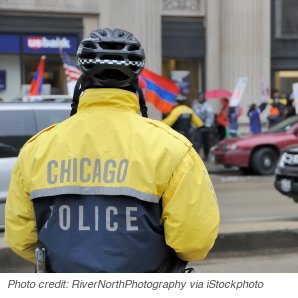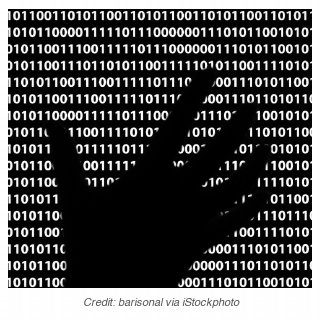Articles Posted in Government
An Act
To provide for the relocation of the United States Embassy in Israel to Jerusalem, and for other purposes.
Be it enacted by the Senate and House of Representatives of the United States of America in Congress assembled,
SECTION 1. SHORT TITLE.
This Act may be cited as the “Jerusalem Embassy Act of 1995”.
 By now, you’ve all read that Justice Antonin Scalia made a series of mistakes in the dissenting opinion of EPA v. EME Homer City Generation, L.P. The Supreme Court issued a corrected version of the opinion on its website. For more on the story, read the coverage in the WSJ Law Blog, the Volokh Conspiracy, or SCOTUSBlog. They’ll give you the background – this post will discuss publishing implications, and why it’s problematic that the Court doesn’t notify the public when they make revisions to opinions.
By now, you’ve all read that Justice Antonin Scalia made a series of mistakes in the dissenting opinion of EPA v. EME Homer City Generation, L.P. The Supreme Court issued a corrected version of the opinion on its website. For more on the story, read the coverage in the WSJ Law Blog, the Volokh Conspiracy, or SCOTUSBlog. They’ll give you the background – this post will discuss publishing implications, and why it’s problematic that the Court doesn’t notify the public when they make revisions to opinions.
Here’s how the Supreme Court’s electronic publishing process works. The first version of the opinion, called the bench opinion, is released in XML format to a handful of publishers (the “Project Hermes” feed). Later that day, a PDF version – the “slip opinion” – is released on the Court’s website. The slip opinions may be further edited, and then the official opinions are published in the bound volumes as citable opinions.
The Supreme Court’s website issues the following disclaimer about the slip opinions found therein:
Caution: These electronic opinions may contain computer-generated errors or other deviations from the official printed slip opinion pamphlets. Moreover, a slip opinion is replaced within a few months by a paginated version of the case in the preliminary print, and–one year after the issuance of that print–by the final version of the case in a U. S. Reports bound volume. In case of discrepancies between the print and electronic versions of a slip opinion, the print version controls. In case of discrepancies between the slip opinion and any later official version of the opinion, the later version controls.
The Court occasionally issues new versions of slip opinions, but they don’t always notify the public when they do so. Professor Emeritus of Cornell Law School and legal information expert Peter Martin has written about this, noting that most changes are for minor typographical errors. However, there have been instances where a significant change was made:
Far more recent history includes the removal of a lengthy footnote from the majority opinion in Skilling v. United States, 561 U.S. 358 (2010). The slip opinion file now at the Court’s web site carries no notice of the revision beyond the indication in the “properties” field that it was modified over two weeks after the opinion’s filing date. To see the original footnote 31 one must go to the CourtListener site or a collection like that of Cornell’s LII built on the assumption that a slip opinion distributed by the Court on day of decision will not be changed prior to its appearance in a preliminary print.
The changes made to Scalia’s dissent in EME Homer were arguably significant. They were also very public. As far as I can tell, it was Law Professor Richard Lazarus who first discovered the error. He blogged about it, it was picked up by national news, and that’s why we know that the change was made. The Supreme Court notified Professor Lazarus of the change, but there is no mention of it on their site. They simply swapped opinions.
 HT to Professor Peter Martin who posts in his blog, Citing Legally, the news that, as of January 1, 2014, “sixty years after the Oklahoma Supreme Court designated the West Publishing Company as the ‘official publisher’ of its decisions, it [has] revoked that designation.” Going forward, the electronic versions of Oklahoma appellate court decisions rendered after January 1st and posted on the State’s Court Network are now deemed “official.” Read more of Professor Martin’s post here. Way to go Oklahoma — You’re O-K!
HT to Professor Peter Martin who posts in his blog, Citing Legally, the news that, as of January 1, 2014, “sixty years after the Oklahoma Supreme Court designated the West Publishing Company as the ‘official publisher’ of its decisions, it [has] revoked that designation.” Going forward, the electronic versions of Oklahoma appellate court decisions rendered after January 1st and posted on the State’s Court Network are now deemed “official.” Read more of Professor Martin’s post here. Way to go Oklahoma — You’re O-K!
 Ohhhhh PACER.
Ohhhhh PACER.
I’m a little bit behind on complaining about it, so here’s the executive summary to catch everyone up: One month after they celebrated 25 years of PACER, the whole thing went down, twice in one week.
In case you missed it, the Administrative Office of Courts issued a statement in December celebrating the twenty five year anniversary of PACER. The electronic filing service was started in 1988. It ushered in the era of electronic filing for federal court documents. To me, the irony of this “celebration” is that PACER, and the local CM/ECF systems, have barely changed since then.
As usual, the Third Branch PR team leads with how PACER has made access “universal.”
“Twenty-five years ago, the vast majority of cases were practically obscure. Today, every Third Branch court is using CM/ECF and PACER,” said Michel Ishakian, chief of staff for the AO’s Department of Program Services, who oversaw PACER from 2008 to 2013. “That means that all dockets, opinions, and case file documents can be accessed world-wide in real time, unless they are sealed or otherwise restricted for legal purposes. This level of transparency and access to a legal system is unprecedented and unparalleled.”
This is technically correct – but Mr. Ishakian neglects two caveats to this statement:
1. Users have to pay to access these documents. You pay to search for them, and you pay to download them.
2. The “opinions” available on PACER are slip opinions, not officially published case law. That means they can’t be cited in court.
 Josh Tauberer recently announced the release of “Open Government Data: Best Practices Language for Making Data ‘License Free.’ That document sets forth recommendations for federal agencies issuing data, and sample Creative Commons Zero (public domain) licensing statements.
Josh Tauberer recently announced the release of “Open Government Data: Best Practices Language for Making Data ‘License Free.’ That document sets forth recommendations for federal agencies issuing data, and sample Creative Commons Zero (public domain) licensing statements.
In the memorandum, Mr. Tauberer and his colleagues discuss how open licensing protocols can be applied by various federal government authors—agencies in house, through contractors, or a mix—to different outputs, such as codes, laws, reports, etc. The overriding principle is that because the federal government’s material is not subject to copyright protection, a CC0 license will make it clear to users that the government disclaims its copyright.
When contractors are involved, things get a little more complicated: “Works produced under a contract with the government may be subject to copyright protection. Any such contract should specify that any copyright in the work is transferred to the government.” Transferring the copyright to the government, of course, obviates it, as federal government works are not subject to copyright protection under the Copyright Act. For mixes of government and non-government works, they recommend that “non-governmental contributors be required to waive copyright protection to their submissions,” which is another way of bringing taxpayer funded government work product into the public domain. This shouldn’t be a controversial proposition, but we’ve seen what happens when private standards are incorporated by reference into law.
 The Administrative Office of the Courts announced yesterday that FDSys will now include opinions from 64 federal courts. The program to integrate federal court opinions into FDSys began in 2011. In 2011, they added opinions from 12 courts. In 2012, they increased that number to 28 courts. In February of this year, they announced that they were expanding the program. And now we know they have increased the number of courts to 64. According to today’s press release, they are backfilling some jurisdictions, putting in an archive back to 2004. They claim to have 750,000 opinions in FDSys now.
The Administrative Office of the Courts announced yesterday that FDSys will now include opinions from 64 federal courts. The program to integrate federal court opinions into FDSys began in 2011. In 2011, they added opinions from 12 courts. In 2012, they increased that number to 28 courts. In February of this year, they announced that they were expanding the program. And now we know they have increased the number of courts to 64. According to today’s press release, they are backfilling some jurisdictions, putting in an archive back to 2004. They claim to have 750,000 opinions in FDSys now.
According to the statement, “FDsys currently contains opinions from 8 appellate courts, 20 district courts, and 35 bankruptcy courts.” To put this in perspective, there are 17 circuit courts, 94 district courts, and 195 bankruptcy courts. All together, they are pulling opinions from 63 of 307 federal courts (roughly). That’s 21% of the federal jurisdictions in 3 years.
As usual, I feel compelled to say “it’s great that they’re doing this, BUT”—they’re focusing on the wrong things. Why are they pulling documents from district courts and bankruptcy courts? The case law that most people care about is appellate opinions that create precedent. In federal jurisdictions, this means the Circuit Courts of Appeal and the United States Supreme Court. FDSys has no SCOTUS opinions (which are freely available on the Court’s site), and only about half of the Circuit Courts of Appeal. Some district court opinions are interesting and useful, and I suppose the same is true for bankruptcy court opinions, but why are they being added ahead of the Supreme Court? 750,000 documents is a lot—my guess is they’re pulling in random orders and rulings that are part of the public record but not especially useful in legal research.
 Fall has finally arrived in sunny California. For weeks, we have witnessed the shortening rays of the sun’s glorious light. Now, as the leaves explode in color to red, orange and yellow hues, we know that the holiday season is but a few weeks away.
Fall has finally arrived in sunny California. For weeks, we have witnessed the shortening rays of the sun’s glorious light. Now, as the leaves explode in color to red, orange and yellow hues, we know that the holiday season is but a few weeks away.
For some, the holiday season can be stressful. How much turkey should I prepare for Thanksgiving dinner? Can I recycle a resolution from a previous New Year’s day? But one question that should be easier to answer this year is how much money to allocate to health flexible spending arrangements (FSAs).
 A 1961 Illinois eavesdropping law “likely violates the First Amendment’s free speech-speech and free-press guarantees,” a federal appeals court ruled.
A 1961 Illinois eavesdropping law “likely violates the First Amendment’s free speech-speech and free-press guarantees,” a federal appeals court ruled.
The 69-page decision by the U.S. Court of Appeals for the Seventh Circuit blocks enforcement of an Illinois criminal law that made it a felony to make audio recordings of Chicago police without receiving their consent.
What prompted the lawsuit?
 According to court documents (see below), the FBI and federal prosecutors got help from hacker Hector Xavier Monsegur a/k/a ‘Sabu’ a/k/a ‘Xavier DeLeon’ a/k/a ‘Leon’ to build cases against other alleged members of Anonymous, LulzSec, Internet Feds, and AntiSec hacker groups.
According to court documents (see below), the FBI and federal prosecutors got help from hacker Hector Xavier Monsegur a/k/a ‘Sabu’ a/k/a ‘Xavier DeLeon’ a/k/a ‘Leon’ to build cases against other alleged members of Anonymous, LulzSec, Internet Feds, and AntiSec hacker groups.
U.S. authorities charged five accused hackers with federal criminal computer hacking violations, while Monsegur pled guilty to a variety of ‘substantive hacking’ violations that included targets like Sony Pictures, Fox Broadcasting, and PBS.
